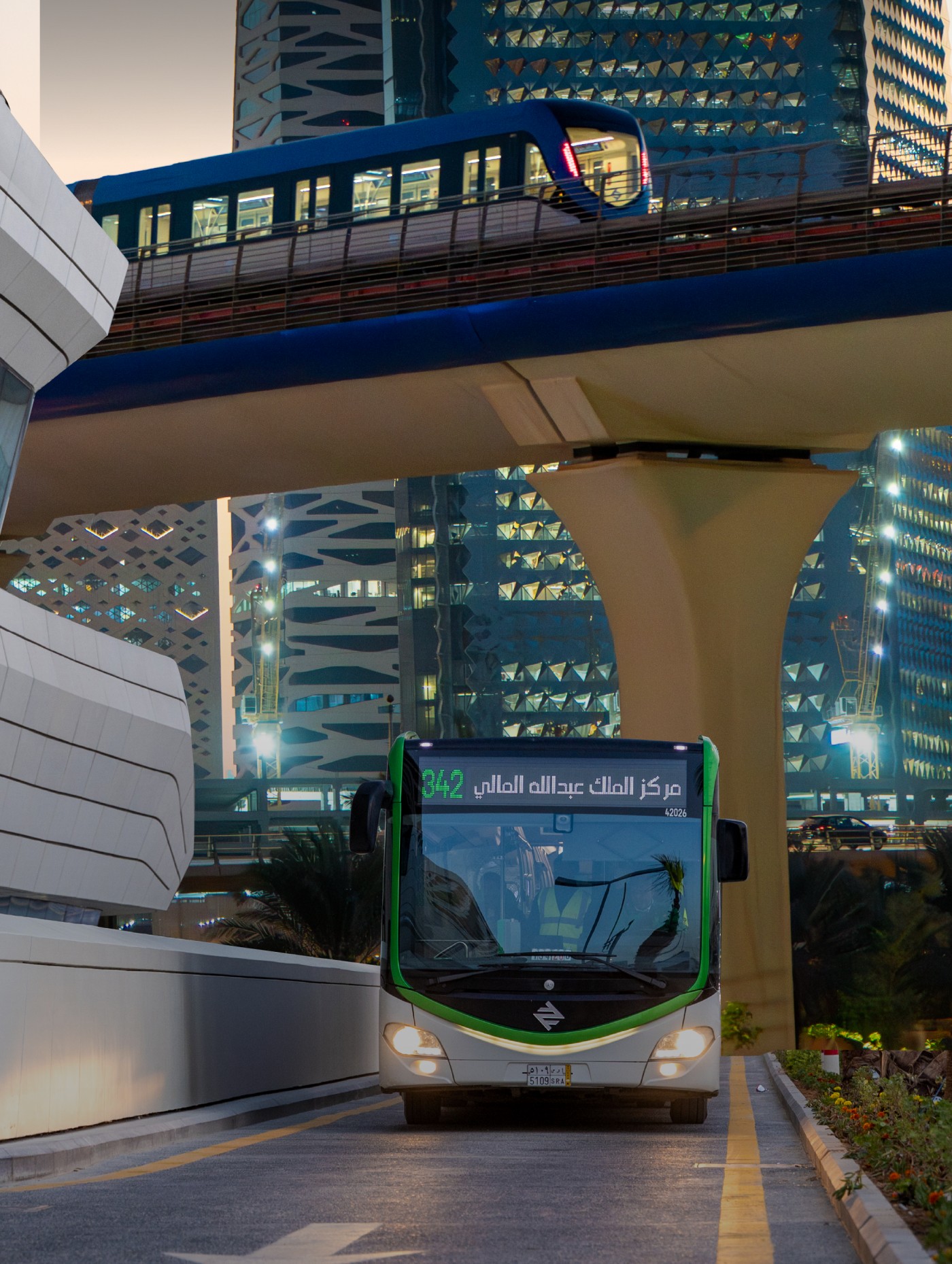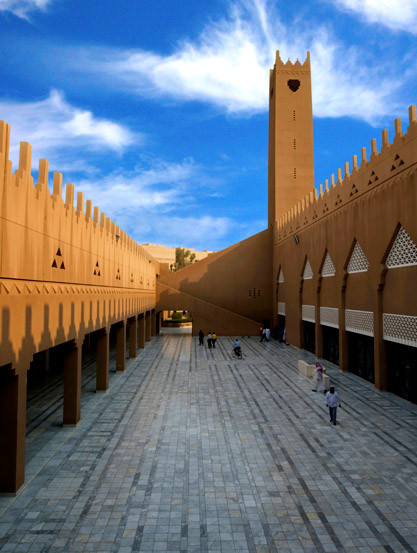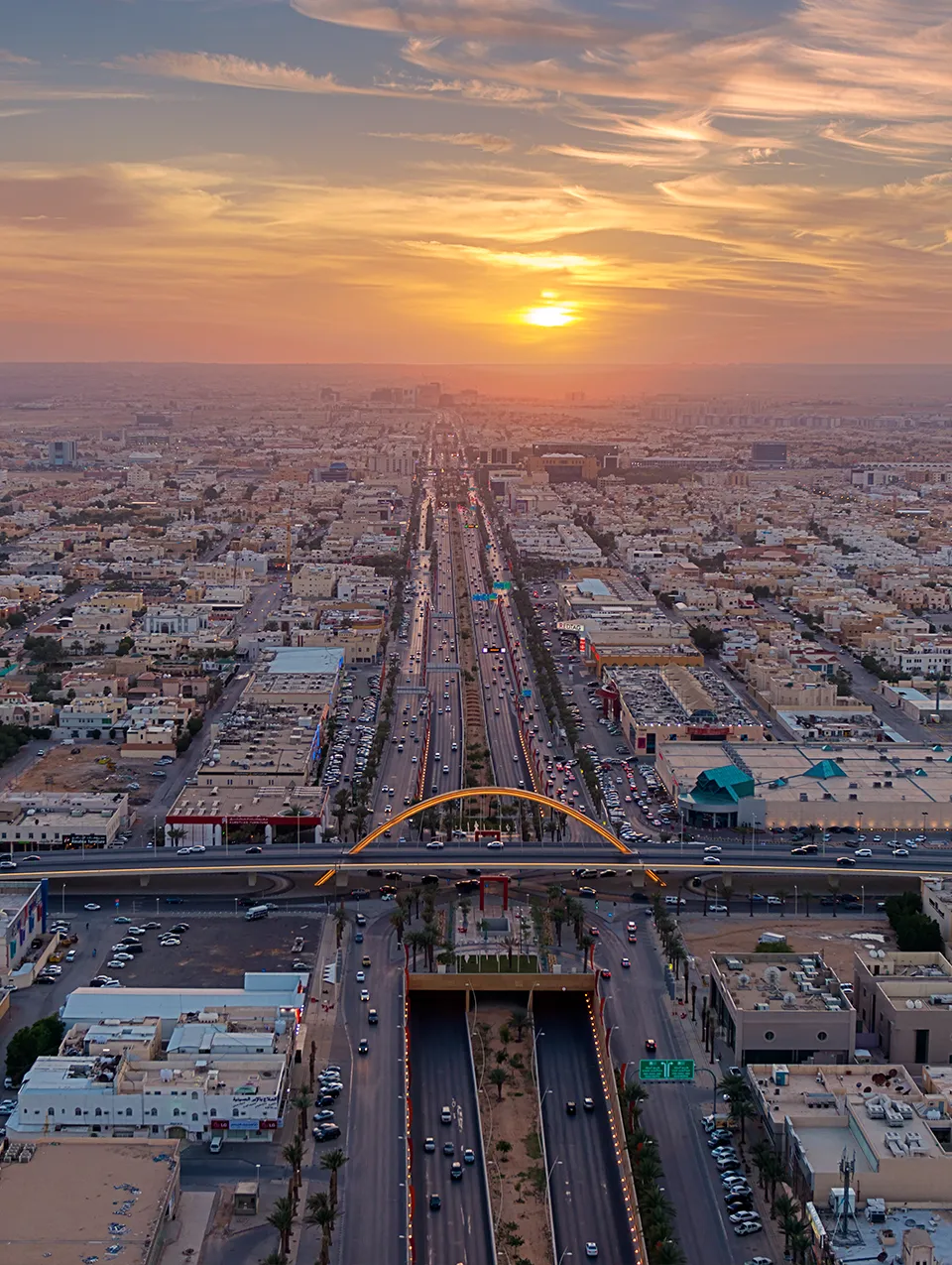HOME / PROGRAMS AND PROJECTS
King Abdulaziz Historical Center
The King Abdulaziz Historical Center is one of the most important urban and cultural landmarks in the capital city of Riyadh, and it was inaugurated on the fifth of Shawwal in 1419 AH on the occasion of the centenary of the founding of the Kingdom of Saudi Arabia by King Abdulaziz. The Royal Commission for Riyadh City developed the planning foundations, intellectual content, and urban and architectural design of this cultural edifice.
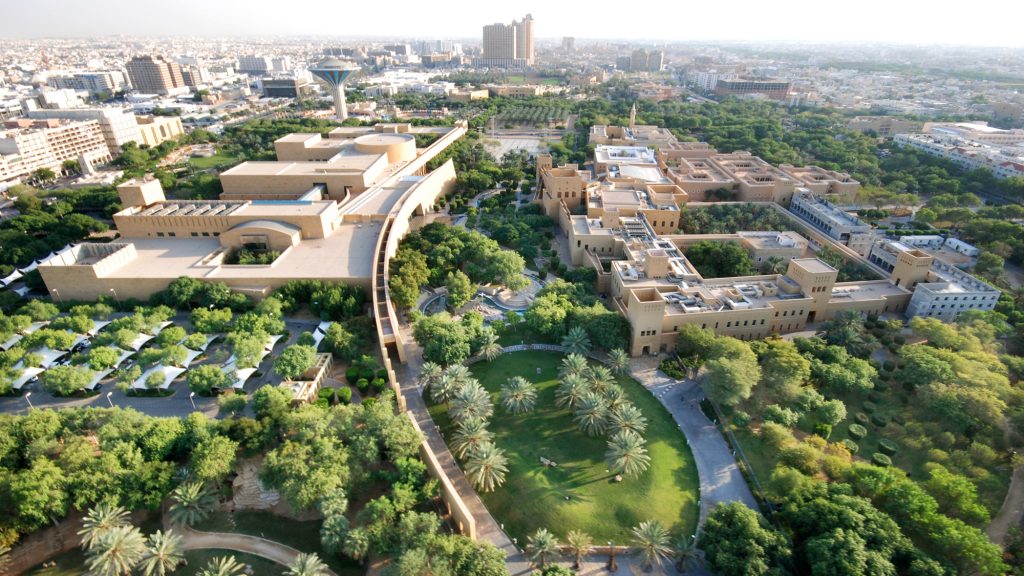
Objectives of the Center
The center was established to be a national landmark, a cultural center that reflects the history of the Arabian Peninsula and the eternal message of Islam. It presents the history of the Kingdom of Saudi Arabia and the foundations on which it was based, and the efforts made to build it.
Geographical location
The King Abdulaziz Historical Center is located in Al-Murabba District in the center of Riyadh and occupies an area of 440,000 m2 and is bordered to the west by Prince Abdullah bin Jalawi bin Turki Street, to the east by King Faisal Street, to the north by Al-Dilam Street, and to the south by Al-Fouta Park.
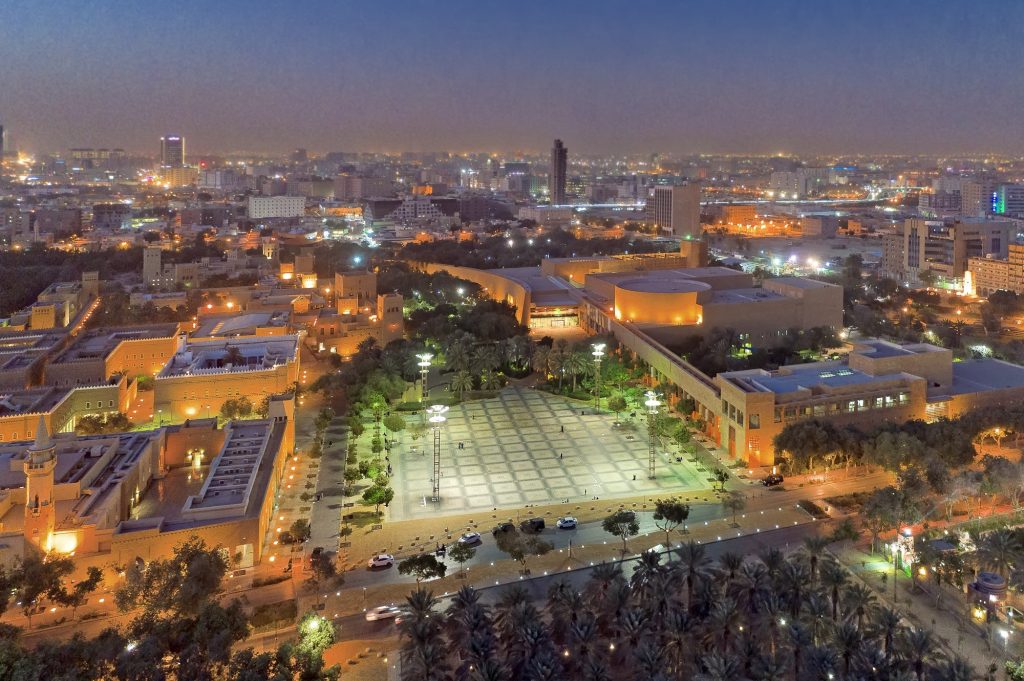
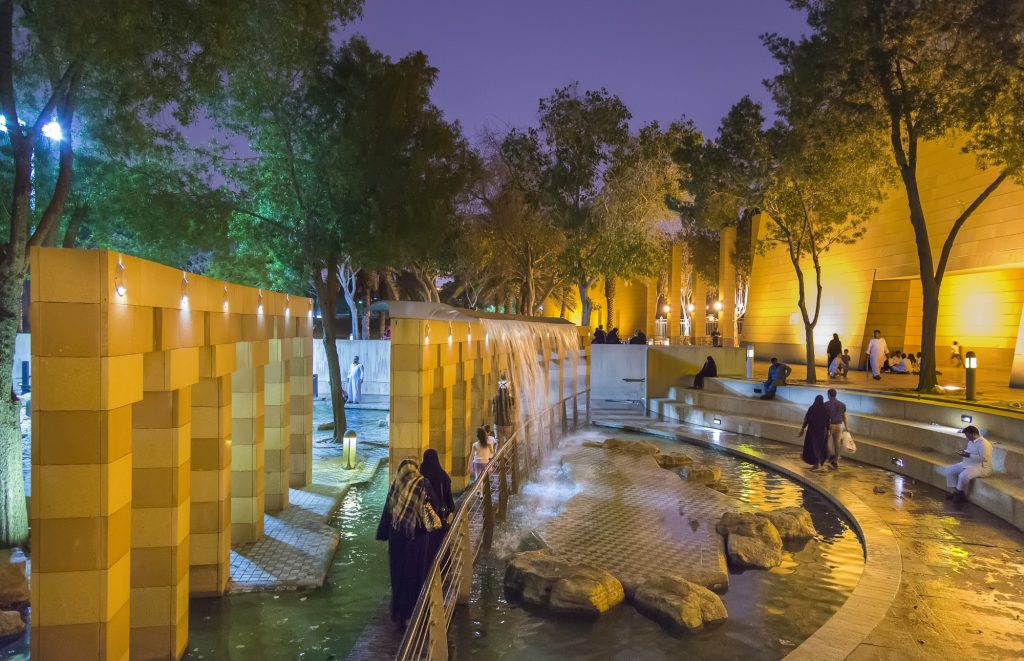
Idea and Design
The design of the King Abdulaziz Historical Center reflects the heritage, cultural, and historical identity of the city of Riyadh, and its facilities fit with the architectural and urban fabric of the surrounding area. This project represents one of the Royal Commission for Riyadh City development programs in the downtown area, where the Commission began to develop the Al-Hukm Palace.
The center is equipped with modern facilities and elements with multiple purposes that make it a cultural oasis in the center of the capital. There are cultural landmarks such as the National Museum, King Abdulaziz House, King Abdulaziz Library branch, and King Abdulaziz Lecture Hall. The center also includes a number of historical facilities, including Al-Murabba Palace, and a number of old heritage buildings that were part of the Al-Murabba Palace complex. The center also includes the King Abdulaziz Mosque, a modern network of roads, multiple parking lots, and paved paths.
The design of the center paid great attention to the environment, as its green spaces, including various types of plants and trees, contribute to reducing pollution, purifying the air, and softening temperatures, to benefit the areas surrounding the center.
Taking into account a large number of visitors to the center, the roads leading to and surrounding it were renovated, the section of King Saud Road that passes through the center was paved, allowing cars to pass and pedestrians to cross at the same time, and parking lots were distributed throughout the center to accommodate more than1,100 cars, and it was kept in an innovative way that allowed the growth of trees that replaced artificial shading.
Public Park
Parks and green spaces represent the infrastructure of the King Abdulaziz Historical Center, which gives it an additional feature with its various cultural and social facilities, which is its natural environment, which forms a green lung through which the neighborhoods of the city center breathe.
The park consists of 6 main walled gardens, an open garden, a spacious and equipped main square, a number of squares, and a palm oasis. In addition to a stream in which water flows from an old well on site.
The garden irrigation system relies on taking advantage of the purified groundwater pumped from King Fahd Road to a large reservoir established under the center’s ground, which is equipped with pumping stations in a way that makes it suitable for irrigating crops of plants, herbs, and trees, where the water passes through a network of pipes and a drip and sprinkler system to include all green areas of the center.
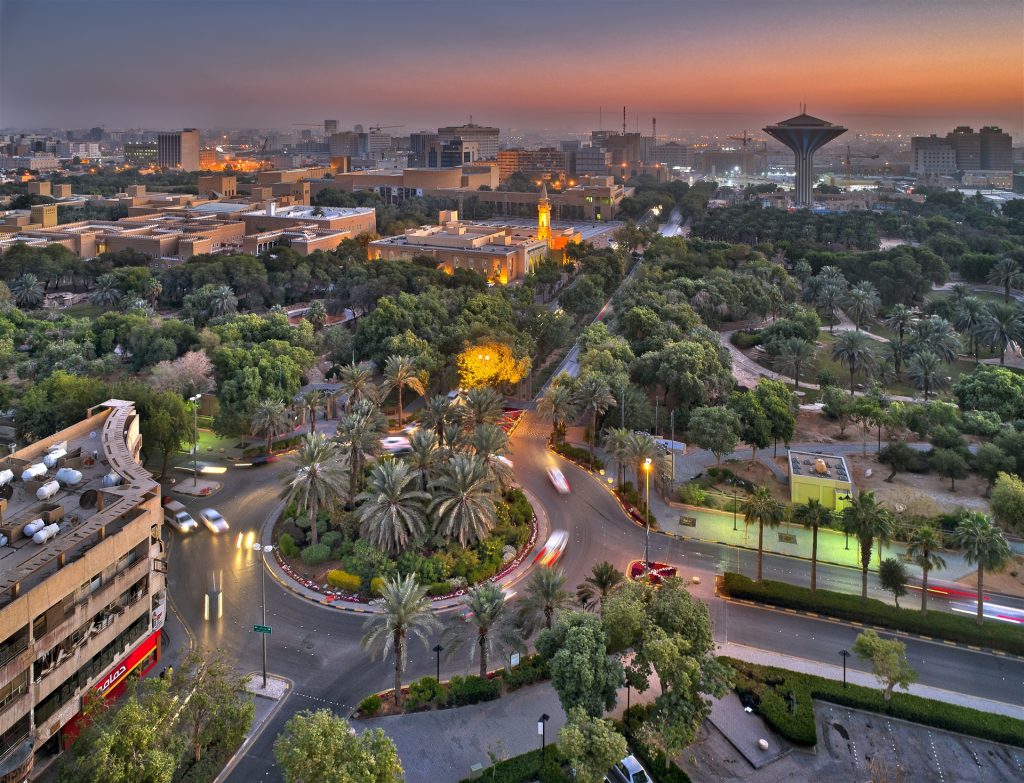

National Museum
The National Museum occupies an area of 17,000 m2 on the eastern side of the King Abdulaziz Historical Center while the total area of its two-story building is 28,000 m2. In designing the National Museum, the Authority took into account the criteria of functional efficiency and beauty of the building, while ensuring that it belongs to the site through the proportions of spaces, internal courtyards, and the selection of materials used in its construction.
The museum is characterized by the integration of its exhibits in presenting a sequential theme from the beginning of the creation of the universe to the modern era, and its main axis revolves around the Arabian Peninsula, and each of the main halls of the museum is unique in providing an independent and integrated thematic display.
Heritage Buildings
The Authority preserved the heritage buildings in the center, according to an international scientific approach to preserve historical buildings, so the “Al-Murabba Palace” was restored and furnished to simulate the era that accompanied the last stages of the life of King Abdulaziz. Parts of the city’s old mud wall, one of the towers of the Al-Murabba Palace complex, and an old well in the middle of the site were restored using traditional means and local materials mainly used in the construction of these facilities, while a group of archaeological mud buildings in the neighborhood was selected to restore them in a way that could be used for contemporary purposes while preserving their basic features.

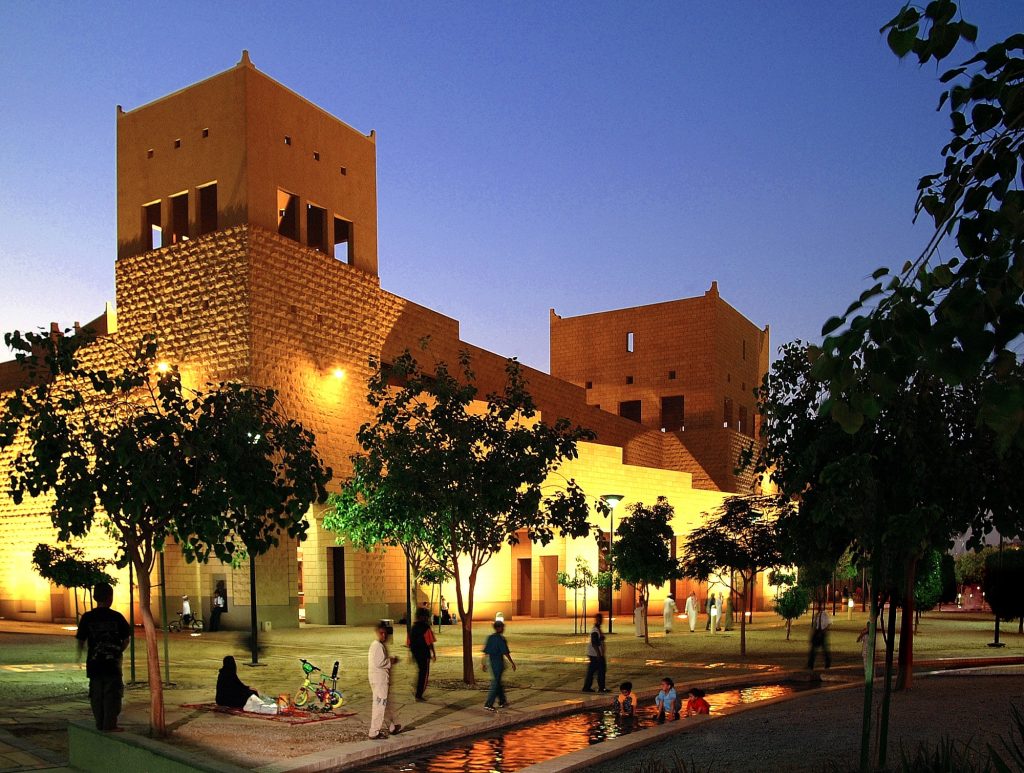
King Abdulaziz Foundation for Research and Archives
The buildings of the foundation were erected on the western side of the main square of the project on the site of the residential palace of King Abdulaziz on a land area of 7000 m2. Its building area is 1201 m2, and the building has been redesigned to retain the basic features of this palace, and some architectural elements from the old palace were used as decorative elements in the fronts and floors of the new building.
The building includes the historical King Abdulaziz Hall, through which the public learns about the history of the founding king, his intellectual effects, and the personal aspects of his private and public biography.
King Abdulaziz Public Library – Al-Murabba Branch
The branch of the King Abdulaziz Public Library includes a library for men, another for women, and a third for children, and in turn, hosts many cultural events throughout the year. The King Abdulaziz Lecture Hall hosts seminars and scientific and cultural conferences and is equipped with modern means of display.
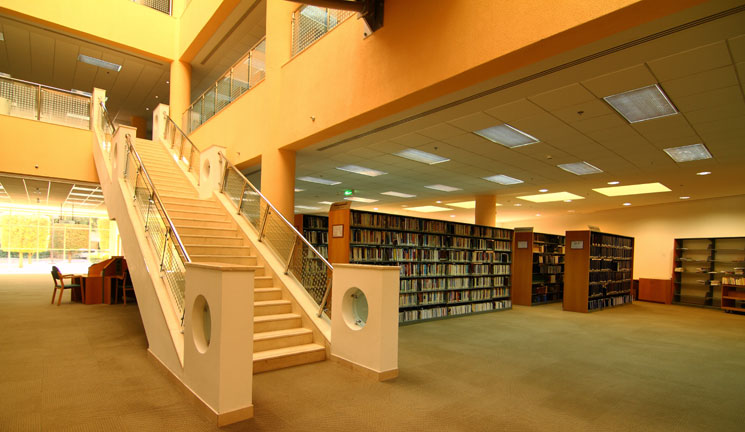
Red Palace
The Red Palace is located south of the King Abdulaziz Historical Center, north of Al-Fouta Park, and this palace dates back to King Saud, where his father King Abdulaziz built it for him in 1948 AD. The palace is distinguished by its different style and reddish color, which is why it is called the Red Palace.
King Abdulaziz Mosque
Within the project of the King Abdulaziz Historical Center, the Authority has completely restored and rehabilitated King Abdulaziz Mosque in terms of architecture, engineering, and service. The mosque is located on the western side of the main square south of the Al-Murabba Palace, overlooking King Saud Street from the north, and can accommodate 4.200 worshipers in the main prayer hall, hallway, and external courtyards, in addition to a prayer room for women.

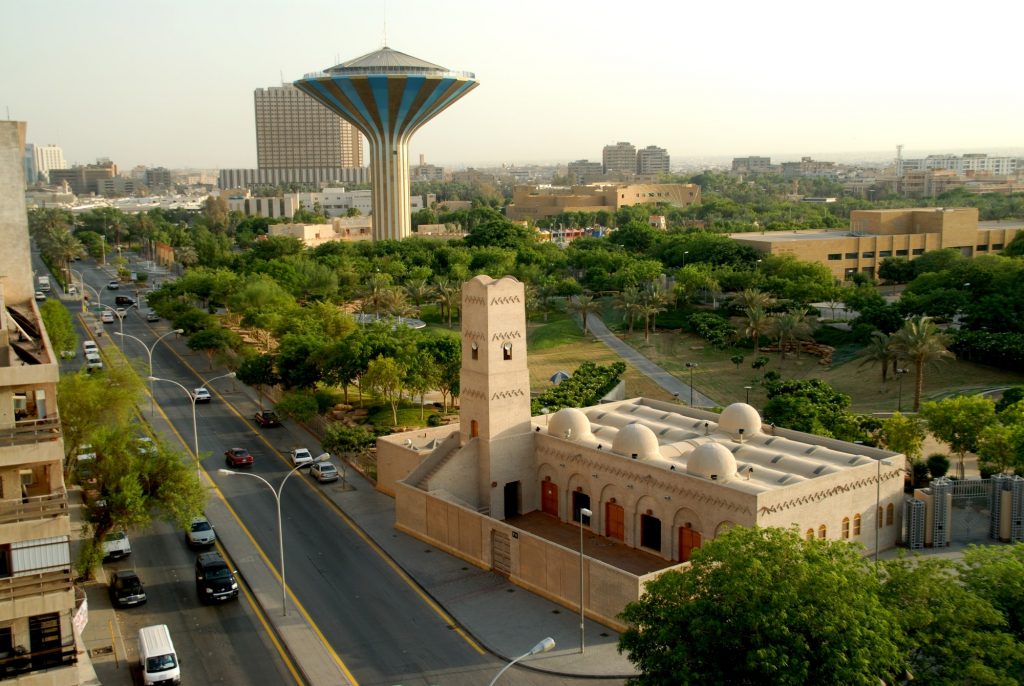
Al-Madi Mosque
Al-Madi Mosque is located on the eastern side of the King Abdulaziz Historical Center, and its construction dates back to the beginning of the sixties of the last century. It remained in its old building until the opening of the King Abdulaziz Historical Center in 1419 AH, where it was demolished as part of the project to develop the eastern front of the center. The Madi Mosque was rebuilt in the same old location and its area and size were increased so that it is located directly on the west bank of King Faisal Street and forms the northwest corner of Madi Park.
The Al Madi Mosque is characterized by its domes, arches, and basements, which are architectural elements imposed by its construction technology, including load-bearing walls and pressed dry bricks. The mosque is considered one of the first architectural structures in the Kingdom to be built with this technology. The dimensions of the Al-Madi Mosque are estimated at 25 × 14 meters with a height of 6 meters, it can accommodate 500 worshipers and its minaret is about 18 meters high.
Water Tower
The tower is located in the southeastern part of the public park, and a lake was established on its western side to highlight the most important landmarks of the Kingdom’s regions, and additional buildings were built surrounding the tower and the lake to provide various services to visitors to Al Watan Park. This tower was built in 1391 AH with the aim of increasing the water pressure in the public water network to meet the needs for water consumption.

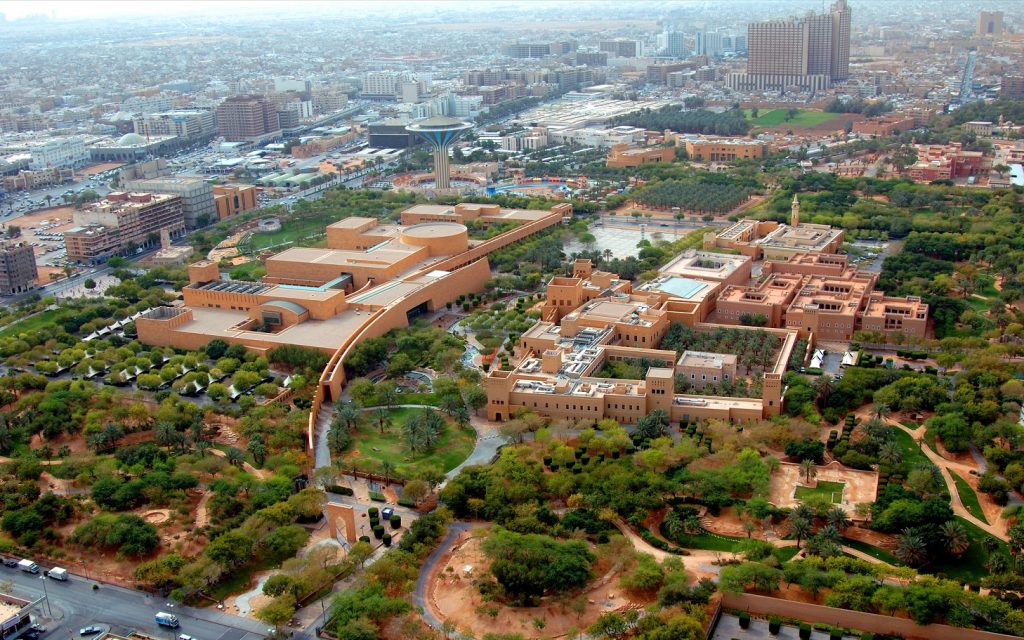
Awards won by the Center
The King Abdulaziz Historical Center has won a number of international awards that are highly regarded internationally, namely:
- King Abdullah II Award for Creativity, 2004
The Center won the King Abdullah II Bin Al Hussein Award for Creativity in the second session of the Award in 2004, where the Center won on the theme “The Role of the Arab City in the Development of Heritage”, ahead of 182 similar projects from several Arab countries. - Prince Sultan bin Salman Award for Urban Heritage
The Center won Prince Sultan bin Salman Award for Urban Heritage in its first session for the year 1427 AH, and the award was given to the Center for its establishment in a historical area that was the focus of the development of the city of Riyadh and the basis of the contemporary Saudi state, and its interest and focus on highlighting the message undertaken by the Kingdom as the landing ground of revelation and the starting point of Islam. - International Prize for Vibrant Communities Foundation Award, in the Urban Projects Aspect
The Center also won first place and the Gold Award in the aspect of urban projects, in the International Award for Vibrant Communities Foundation in London, Britain for the year 2007. - First Prize of the Organization of Islamic Capitals and Cities
The Madi Mosque project in the King Abdulaziz Historical Center won the first prize from the Organization of Islamic Capitals and Cities in its seventh session of 1428 AH for municipal projects and services.
